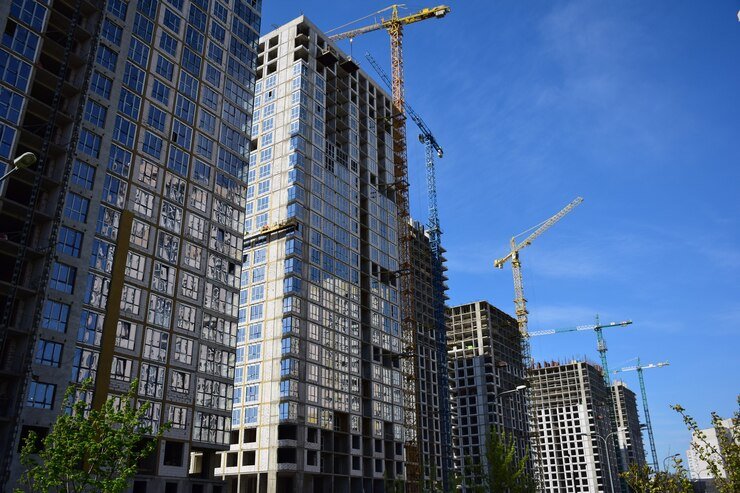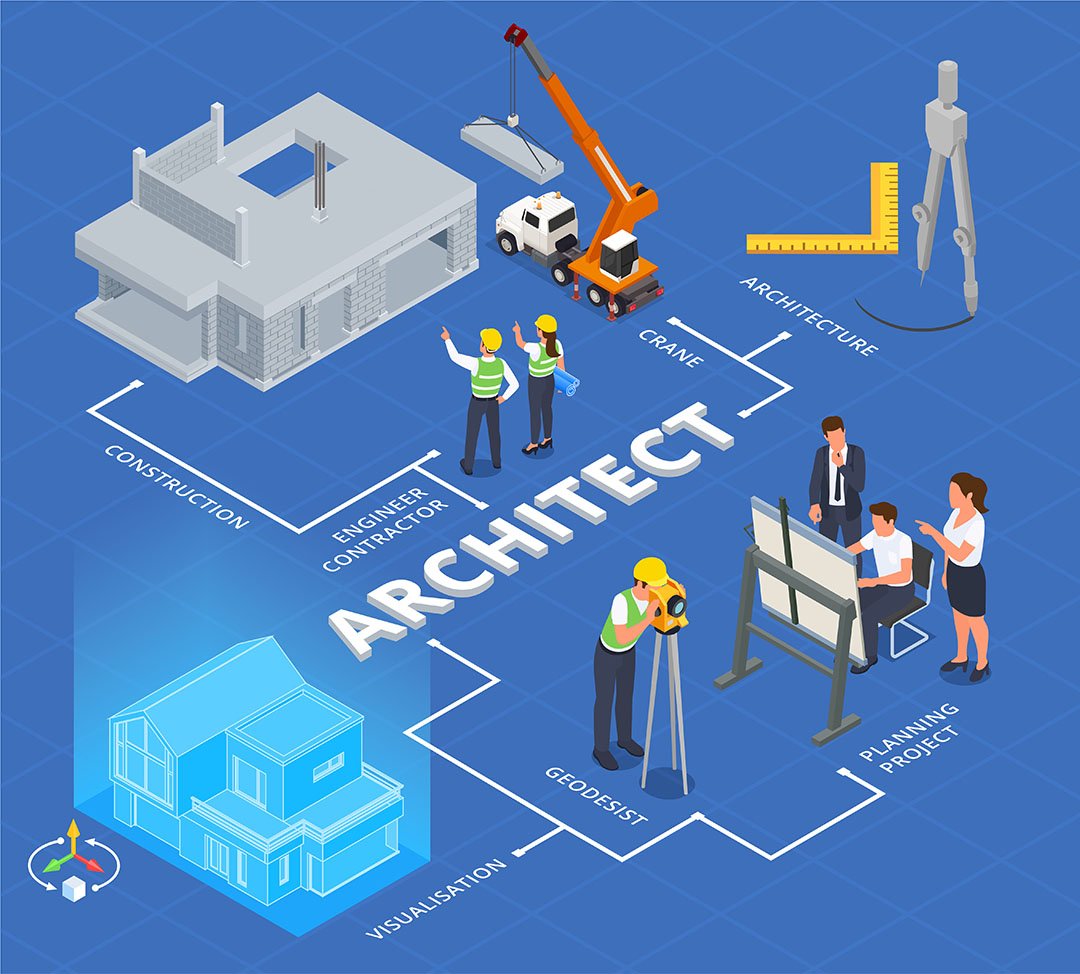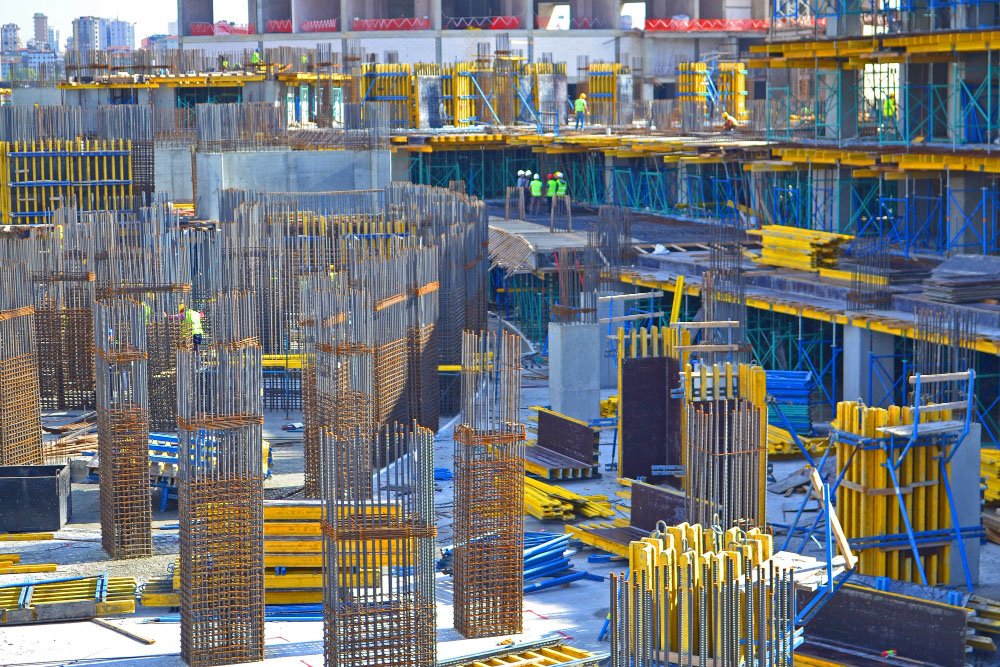Commercial construction is the process of building structures where people work, shop, eat, and do business. These aren’t homes; they’re places like schools, hospitals, office buildings, malls, and restaurants. If you’ve ever walked into a grocery store or visited a doctor’s clinic, you’ve been inside a commercial building.
This type of construction plays a prominent role in shaping our cities and communities. It helps create jobs, boosts the economy, and builds the spaces we need to live our daily lives. Without commercial construction, we wouldn’t have the schools we learn in, the stores we shop at, or the offices where many adults work.
What is Commercial Construction?
Commercial construction refers to the building of places where people conduct business or provide services, as opposed to residential buildings. These are called non-residential buildings. When workers build an office tower, a shopping mall, or even a school, they’re engaged in commercial construction.
The goal of commercial construction is to create spaces that enable businesses to operate or serve the public. Some of the most common types of commercial buildings include:
- Offices
- Retail stores
- Warehouses
- Hospitals and clinics
- Schools and universities
Types of Commercial Construction Projects
Commercial construction projects vary in size, depending on the scope of the project, whether it involves building or improving a structure. These projects usually fall into three main types: small-scale, medium-scale, and large-scale.
Small-Scale Construction
Small-scale projects are the easiest and fastest to complete. They often involve improving or changing parts of existing buildings. These changes make the space more useful or attractive without requiring the construction of something completely new. They are shorter, require less equipment and team.
Mid-Scale Construction
Medium-scale projects are larger and typically involve building something from scratch, albeit not on a massive scale. These buildings require more planning and work than minor updates, but they aren’t as complex as giant projects. They still have essential features, such as parking lots, utility systems, and safety equipment. Takes more time and consume more labors.
Large-Scale Construction
Large-scale projects are the most complex. These include places such as shopping malls, large hospitals, hotels, or entire business campuses with multiple buildings. These requires a significant amount of time, money, and meticulous planning. Builders must coordinate with numerous experts from architects to electricians to ensure everything works together seamlessly. These projects also need to adhere to strict building codes and safety regulations, as they’re used by many people every day.

The Commercial Construction Process
It’s a step-by-step process that takes time, teamwork, and careful planning. Let’s break it down.
Planning and Design Phase
Architects create blueprints that illustrate the building’s design and functionality. Engineers help figure out the structure, electrical systems, plumbing, and safety features. This stage also involves setting a budget and determining the project’s duration.
Pre-Construction Phase
During this time, the construction company prepares the site for building. They test the soil, study the land, and determine how to mitigate problems such as flooding or unstable ground. They also hire key team members, including project managers, safety inspectors, and subcontractors, who will handle the various aspects of the build.
Bidding & Permits
The project owner invites different contractors to bid or compete for the job. Each contractor provides a detailed estimate of the cost and the expected duration. Once a contractor is chosen, they must get permits from the local government. These permits demonstrate that the project complies with safety laws and building codes.
Procurement
which involves purchasing all necessary materials for the job. This includes materials such as concrete, steel, and glass, as well as tools, plus hiring workers and arranging equipment. Getting the right materials at the right time helps keep the project on schedule.
Construction & Management
Workers begin building the structure according to the plans. Managers stay on site to make sure everything is done safely, correctly, and on time. They solve problems, monitor progress, and communicate regularly with the owner.
Post-Construction and Handover Stage
Once the building is complete, inspectors thoroughly inspect it from top to bottom to ensure it’s safe and meets all applicable regulations. The team fixes any last-minute issues, cleans the space, and officially hands it over to the owner. Now, it’s ready to open and serve the public.

Now, look at the loans require for commercial construction.
Commercial Construction Financing/Loans
Building a commercial property can be a costly endeavor. Most people or companies don’t have a large amount of money saved up, so they need help to pay for it. There are several ways to accomplish this.
One standard option in the United States is using SBA loans. SBA stands for Small Business Administration, a government agency that helps small businesses. Two popular types of SBA loans are the 504 loan and the 7(a) loan.
The SBA 504 loan is primarily used for purchasing land, buildings, or equipment. It usually comes with low interest rates and longer repayment times. The SBA 7(a) loan is more flexible. Businesses can use it for purchasing property, paying employees, or covering construction costs. These loans are beneficial because the government guarantees a portion of them, which makes banks more willing to lend money.
Another way to pay for commercial construction is through private equity or investor funding to help fund the project. In return, investors typically receive a share of the profits or a stake in the ownership of the building. This method is generally used for large projects, such as shopping centers or hotels, especially when traditional loans are insufficient.
Who’s Involved in Commercial Construction?
Commercial construction requires a team of experts working together to complete the job correctly.
- It begins with owners and developers, who decide what to build, where to build it, and how to finance it.
- Developers often manage planning, budgeting, and hiring.
- Architects design how the building will look and function. Engineers make sure those designs are safe and practical, handling the structure, electrical systems, and plumbing.
- The general contractor runs the construction site. They hire subcontractors, such as electricians and plumbers, and keep the project on schedule.
- City inspectors and regulatory authorities ensure that the building complies with safety codes and zoning laws. Their approval is required before the project can move forward.
Commercial Construction Challenges
Even with a strong team, commercial construction faces real challenges.
- Staying on budget is tough. Material prices can fluctuate, and unexpected issues can incur additional costs.
- Teams must manage money carefully to avoid overspending.
- Following regulations and zoning laws is a must. Mistakes here can cause costly delays or redesigns.
- Scheduling and logistics are tricky. Delays in materials or the absence of workers can hold up the entire project. Everything must arrive on time and in the correct order.
- Labor shortages and supply delays are common. A lack of skilled workers or late shipments can stop progress and increase costs.
Now, we will compare the commercial building with the residential construction and see how both differ.
Commercial vs. Residential Construction
Commercial projects are typically much larger and more complex than homes. They often involve several floors, advanced systems, and support for hundreds of people. In contrast, residential construction focuses on places where people live, such as houses or apartment buildings, which are typically smaller and simpler.
Commercial buildings must meet stricter safety codes and regulations. These rules cover aspects such as fire exits, emergency lighting, and the maximum number of people the building can safely accommodate. Residential buildings still follow safety rules, but they’re less complex.
The design and materials used are different, too. Commercial buildings often need steel frames, elevators, heavy-duty wiring, and strong HVAC systems. Homes typically use wood framing and lighter materials, which are designed for smaller populations.
Commercial projects typically cost more, take longer to build, and involve a greater number of stakeholders, including investors, city planners, and business owners. Residential builds commonly involve fewer people and have shorter schedules.
Final Thoughts
Commercial construction is beyond building immense structures—it’s about creating spaces where communities work, learn, shop, and grow. From small office upgrades to massive hospitals and malls, every project takes careful planning, skilled teamwork, and the right resources to succeed.
Understanding how commercial construction works including people, finance, and the challenges it faces helps you see how cities and businesses are built from the ground up. Whether you’re just curious or considering a future in the field, knowing these basics provides a strong foundation.
